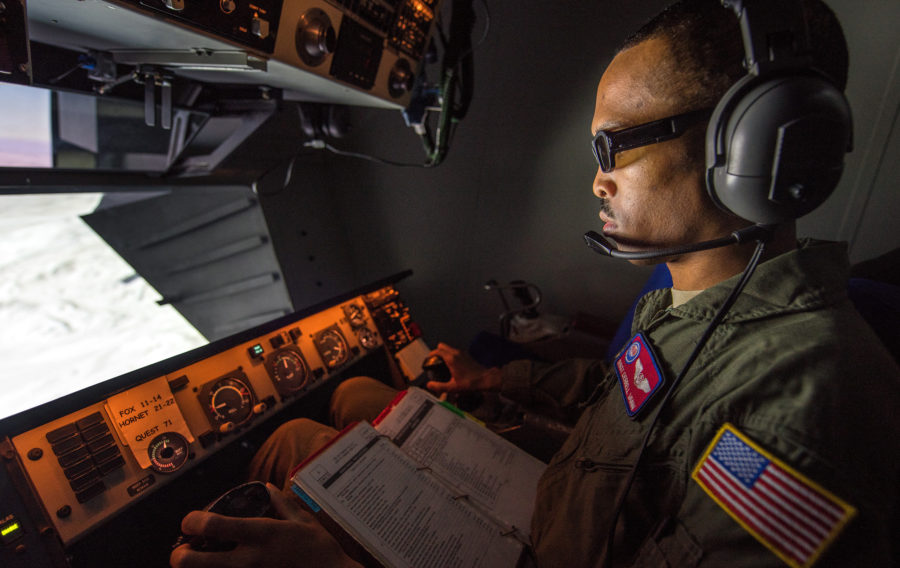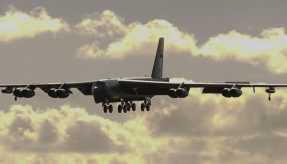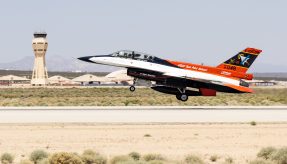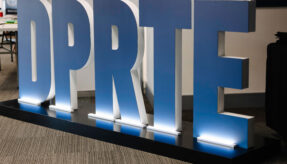
The US Air Force is readying its KC-10 Extender boom operators for the future, thanks to a brand new programme combining cutting-edge, three-dimensional simulation with life-size cargo load training.
In US Air Force parlance, the boom operator is the aircrew member responsible for aerial refuelling aboard tanker aircraft. The new training regime is especially welcome as the KC-10, along with its aircrew and maintenance staff, have been in regular deployment since the beginning of Desert Shield.
The Boom Operator Trainer (BOT) itself has been upgraded with an advanced visual system replacement (VST). This new ‘BOT-VST’ provides greater capability than the previous version, according to Rob Tabor – KC-10 Extender boom operator instructor and contractor with FlightSafety International.
“The new system has the ability now to produce a three-dimensional visual image. We’ve gone from a flat rear projection display to a culminated 4K display,” said Tabor. “Instead of projecting an image onto a flat screen, we’re now projecting the image onto an 11-foot mirror.”
This enhanced image quality provides more realistic depth perception to boom operators during training. Previously, a similar sense of depth could only be experienced on an aircraft proper.
“The whole environment is much more realistic. That transition from simulator to aircraft is much more visually realistic than in the past,” continued Tabor. “We train all active duty and reserve Airmen here at Travis, and we also train foreign students from Italy and the Netherlands. We train over 600 students each year.”
Training includes an initial qualification course, an instructor upgrade course and a re-qualification course. Once certified, every boom operator is required to complete the two-day refresher course every quarter. The most demanding and time-consuming session is the initial training course however.
“The initial qualification course is a 38-day intense, scenario-based simulator training,” said Tabor. “Students must pass the course, then pass the Air Force-administered evaluation in the simulator before they can start refuelling in the aircraft.”
Travis Air Force Base, California was the first facility within Air Mobility Command (AMC) to officially receive the advanced 3D simulator and it remains the only AMC outpost to utilise the state-of-the-art cargo load trainer – a life-size model that allows boom operators to become proficient at loading cargo.
If you would like to join our community and read more articles like this then please click here.







